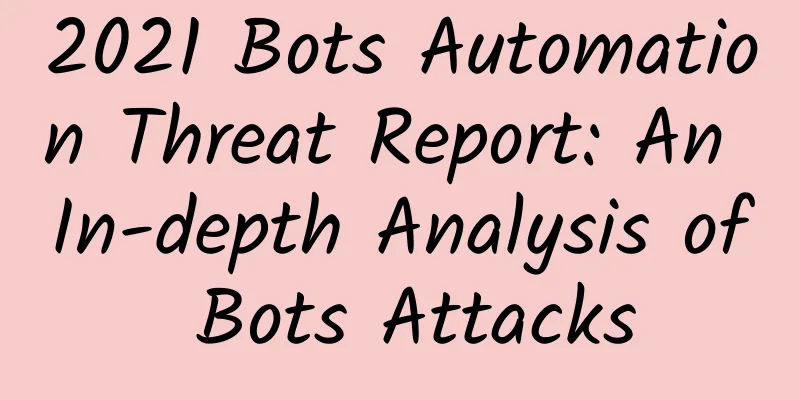WiFi isn't that secure: Tips to protect your home network

|
Wireless routers have been attacked frequently recently. Home users who used to think that network security had nothing to do with them can't help but feel the danger. Home wireless routers are not only the home Internet center, but also the control center of smart home devices. Once attacked by hackers, not only will the user's personal privacy and property be stolen, but even their lives will be disturbed. Not only that, after being attacked, their smart devices and smart home devices may become zombie networks, controlled by hackers, and attack other devices on the network.
Step 1: Change the default administrator account and password The first and simplest thing to do to protect the security of your home wireless router is to change the management account and password of the wireless router background. Many users use the default account and password, which makes it easy for hackers to take over the control of the wireless router at home. Once controlled, the DNS of the router will be tampered with. As a result, the web pages we visit will jump to the hacker's phishing webpage to steal the user's personal privacy and bank account information. Be sure to change the default account and password of the management background. It is best to use letters + numbers + symbols, and it is best to have more than 8 characters. The second method: Change the default WiFi password of the router Simple passwords are the most popular among home users, such as "88888888, 12345678, 11111111...", etc. These are common WiFi passwords in our daily lives. It is recommended that you also change it to letters + numbers + symbols, which is the least likely to be cracked. At the same time, some routers are set with a default SSID and WiFi password when they leave the factory, which are affixed to the nameplate of the device. The passwords of devices of the same model are generally the same, so we also recommend that users change to a new SSID and password. Tip 3: Update the firmware in time and turn off remote control Manufacturers will patch their own security vulnerabilities as soon as possible, so we recommend that you update the firmware of your wireless router in time. If you don't trust the router's self-upgrade, you can download the latest official firmware from the product's official website and then perform a local upgrade. After the upgrade is completed, it is best to immediately enter the router's management background and turn off the "remote management" function in the settings. Many routers have loopholes in the "remote management" function, which are exploited by hackers to break into the user's router. |
<<: Aryaka wins the 2016 Global Most Influential SD-WAN Solution Award
>>: IDC: Ethernet switch market grows 2%
Recommend
How does HTTPS ensure secure transmission?
[[379186]] Preface The HTTPS connection process i...
The love-hate relationship between TCP and UDP
Recently, the epidemic in Qiaoxi District, Shijia...
Skipping 5G, the United States starts working on 6G: Apple, Google and others join the "Next Generation G Alliance"
Apple’s 5G iPhone has just been launched, and it’...
15 Best Practices for Fiber Optic Cable Installation in Data Centers
CABLExpress recently released its latest Fiber Op...
CloudCone: KVM monthly payment starts at $1.99, Los Angeles data center, supports PayPal/Alipay
CloudCone's [2021 Flash Sale] event is still ...
IP address conversion: conversion between numbers and strings
There are generally two formats for storing IP ad...
Broadband diversion has a huge impact, and traffic has little room for explosive growth
The unit price of traffic has dropped from 15 yua...
5G unlocks new solutions for the medical industry
5G unlocks new solutions for the medical industry...
Alibaba Cloud Double 11 Carnival: Cloud server annual payment starts from 85 yuan, cloud database starts from 19.9 yuan/year, com domain name starts from 23 yuan
When talking about domestic cloud server manufact...
Super detailed explanation of Socket communication principles and examples
We are well aware of the value of information exc...
Why Microsoft won't rebuild Windows based on the Linux kernel
A few weeks ago, the opinion of Eric S Raymond, a...
Graphic: A brief history of router architecture
Over the past 50 years, we’ve made a lot of progr...
NVIDIA Ethernet Acceleration xAI Builds World's Largest AI Supercomputer
Oct. 28, 2024—NVIDIA announced that xAI’s Colossu...
Sharktech: High-security VPS with 50% off annual payment starting at $47.7/year - 2GB/40GB/4TB/Los Angeles & Denver multiple data centers
Sharktech is offering a 25% discount on quarterly...
A Brief Discussion on WebSocket Protocol-RFC 6455
Labs Guide Before the emergence of WebSocket, the...







![[Black Friday] ZJI Hong Kong Alibaba dual-line server monthly payment is reduced by 350 yuan, and Hong Kong Kuiwan high-defense server monthly payment is reduced by 1,500 yuan](/upload/images/67cac496301ca.webp)

